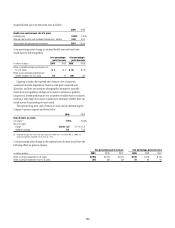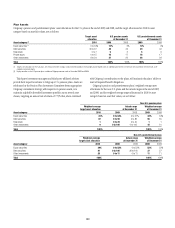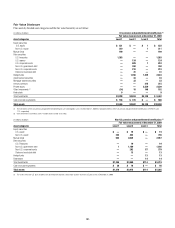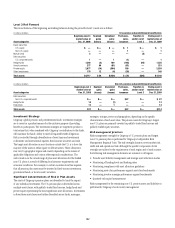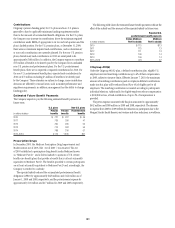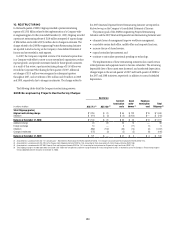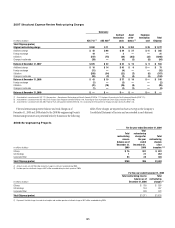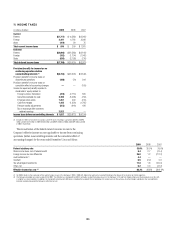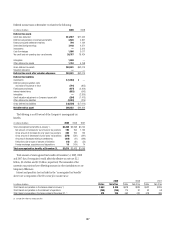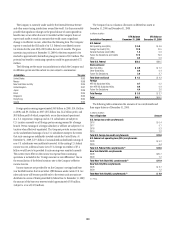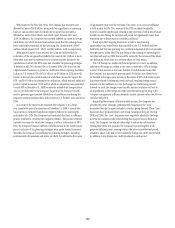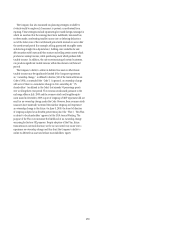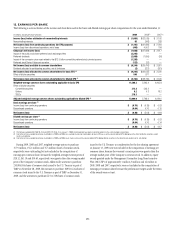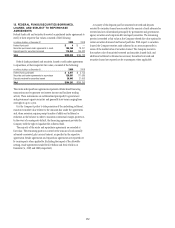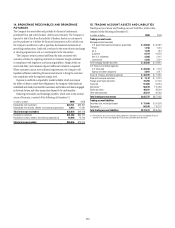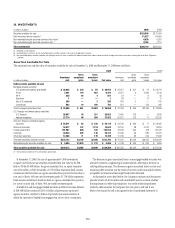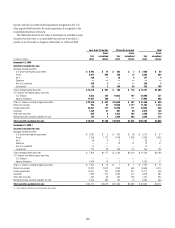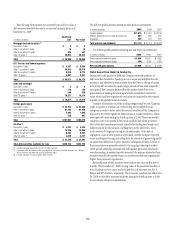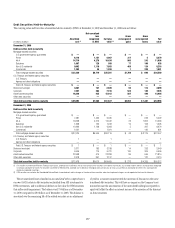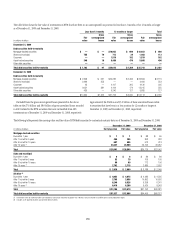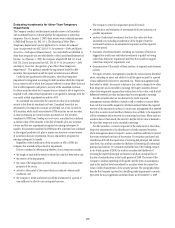Citibank 2009 Annual Report Download - page 179
Download and view the complete annual report
Please find page 179 of the 2009 Citibank annual report below. You can navigate through the pages in the report by either clicking on the pages listed below, or by using the keyword search tool below to find specific information within the annual report.169
With respect to the New York NOLs, the Company has recorded a net
deferred tax asset of $0.9 billion, along with less significant net operating
losses in various other states for which the Company has recorded a
deferred tax asset of $0.4 billion and which expire between 2012 and
2029. In addition, the Company has recorded deferred tax assets in foreign
subsidiaries, for which an assertion has been made that the earnings have
been indefinitely reinvested, for net operating loss carryforwards of $607
million (which expire 2012 - 2019) and $69 million (with no expiration).
Although realization is not assured, the Company believes that the
realization of the recognized net deferred tax asset of $46.1 billion is more
likely than not based on expectations as to future taxable income in the
jurisdictions in which the DTAs arise and available tax planning strategies,
as defined in ASC 740, Income Taxes, (formerly SFAS 109) that could be
implemented if necessary to prevent a carryforward from expiring. Included
in the net U.S. Federal DTA of $36.3 billion are $5 billion in DTLs that will
reverse in the relevant carryforward period and may be used to support the
DTA , and $0.5 billion in compensation deductions, which reduced additional
paid-in capital in January, 2010 and for which no adjustment was permitted
to such DTA at December 31, 2009 because the related stock compensation
was not yet deductible to the Company. In general, the Company would
need to generate approximately $86 billion of taxable income during the
respective carryforward periods to fully realize its U.S. Federal, state and local
DTAs.
As a result of the recent losses incurred, the Company is in a three-
year cumulative pretax loss position at December 31, 2009. A cumulative
loss position is considered significant negative evidence in assessing the
realizability of a DTA. The Company has concluded that there is sufficient
positive evidence to overcome this negative evidence. The positive evidence
includes two means by which the Company is able to fully realize its DTA.
First, the Company forecasts sufficient taxable income in the carryforward
period, exclusive of tax planning strategies, even under stressed scenarios.
Secondly, the Company has sufficient tax planning strategies, including
potential sales of businesses and assets, in which it could realize the excess
of appreciated value over the tax basis of its assets, in an amount sufficient
to fully realize its DTA. The amount of the DTA considered realizable,
however, could be significantly reduced in the near term if estimates of future
taxable income during the carryforward period are significantly lower than
forecasted due to deterioration in market conditions.
Based upon the foregoing discussion, as well as tax planning
opportunities and other factors discussed below, the U.S. Federal and New
York State and City net operating loss carryforward period of 20 years provides
enough time to utilize the DTAs pertaining to the existing net operating loss
carryforwards and any NOL that would be created by the reversal of the future
net deductions which have not yet been taken on a tax return.
The U.S. foreign tax credit carryforward period is 10 years. In addition,
utilization of foreign tax credits in any year is restricted to 35% of foreign
source taxable income in that year. Further, overall domestic losses that
the Company has incurred of approximately $45 billion are allowed to be
reclassified as foreign source income to the extent of 50% of domestic source
income produced in subsequent years and such resulting foreign source
income is in fact sufficient to cover the foreign tax credits being carried
forward. As such, the foreign source taxable income limitation will not be
an impediment to the foreign tax credit carryforward usage as long as the
Company can generate sufficient domestic taxable income within the 10-year
carryforward period.
Regarding the estimate of future taxable income, the Company has
projected its pretax earnings, predominantly based upon the “core”
businesses that the Company intends to conduct going forward. These “core”
businesses have produced steady and strong earnings in the past. During
2008 and 2009, the “core” businesses were negatively affected by the large
increase in consumer credit losses during this sharp economic downturn
cycle. The Company has already taken steps to reduce its cost structure.
Taking these items into account, the Company is projecting that it will
generate sufficient pretax earnings within the 10-year carryforward period
alluded to above to be able to fully utilize the foreign tax credit carryforward,
in addition to any foreign tax credits produced in such period.


